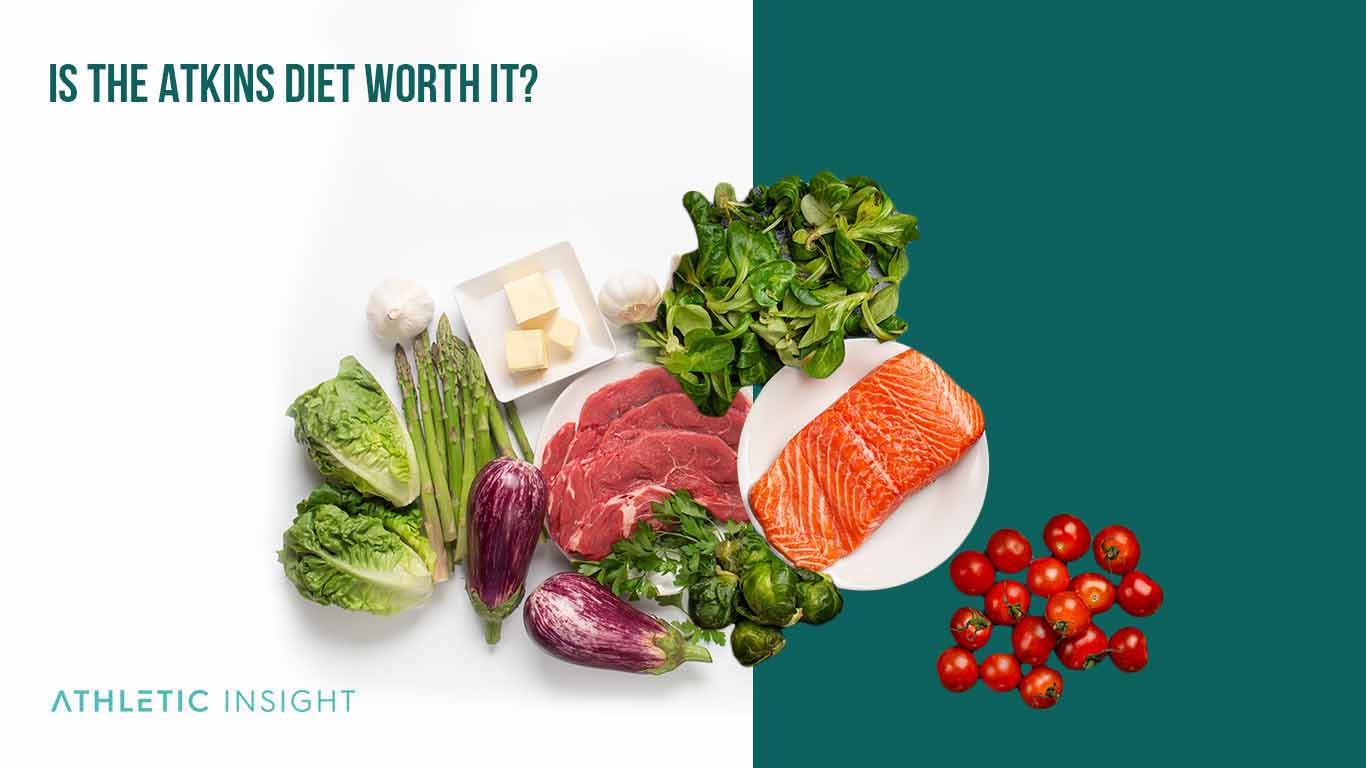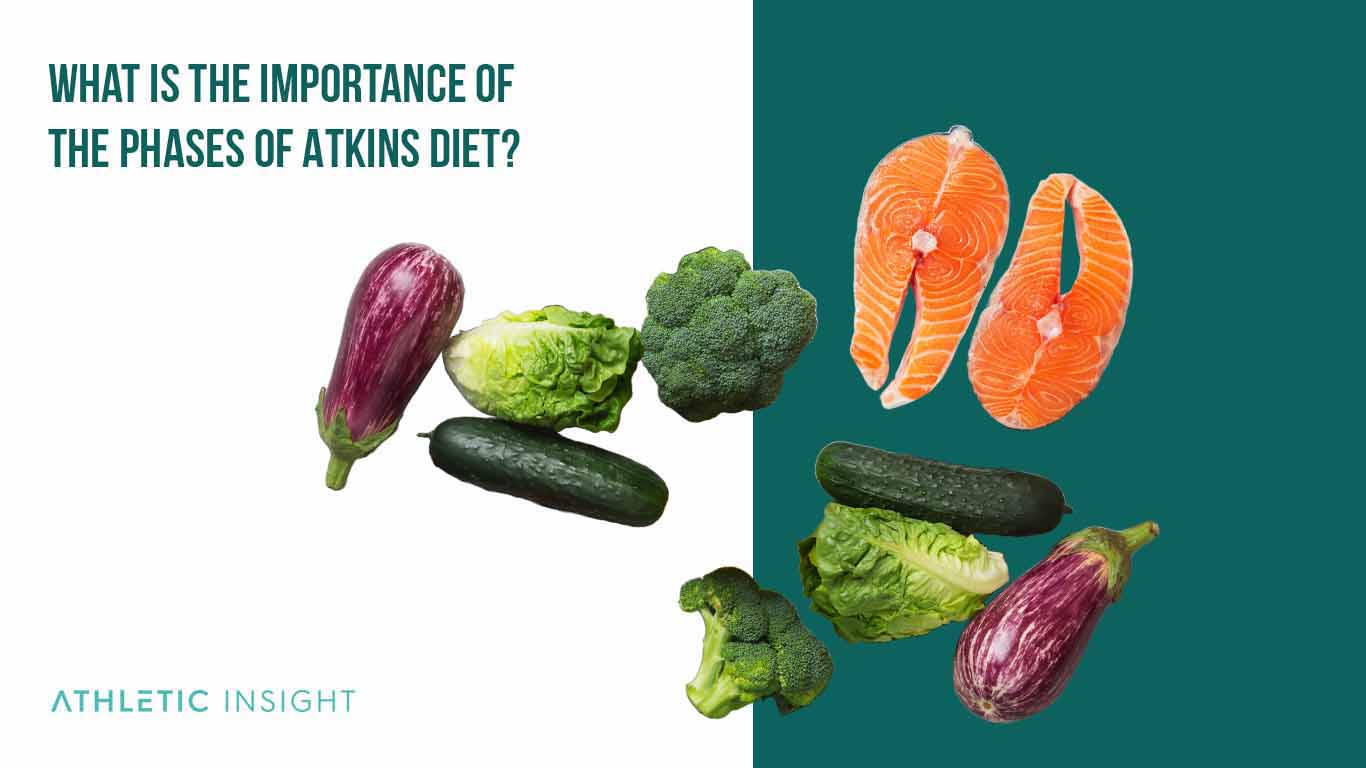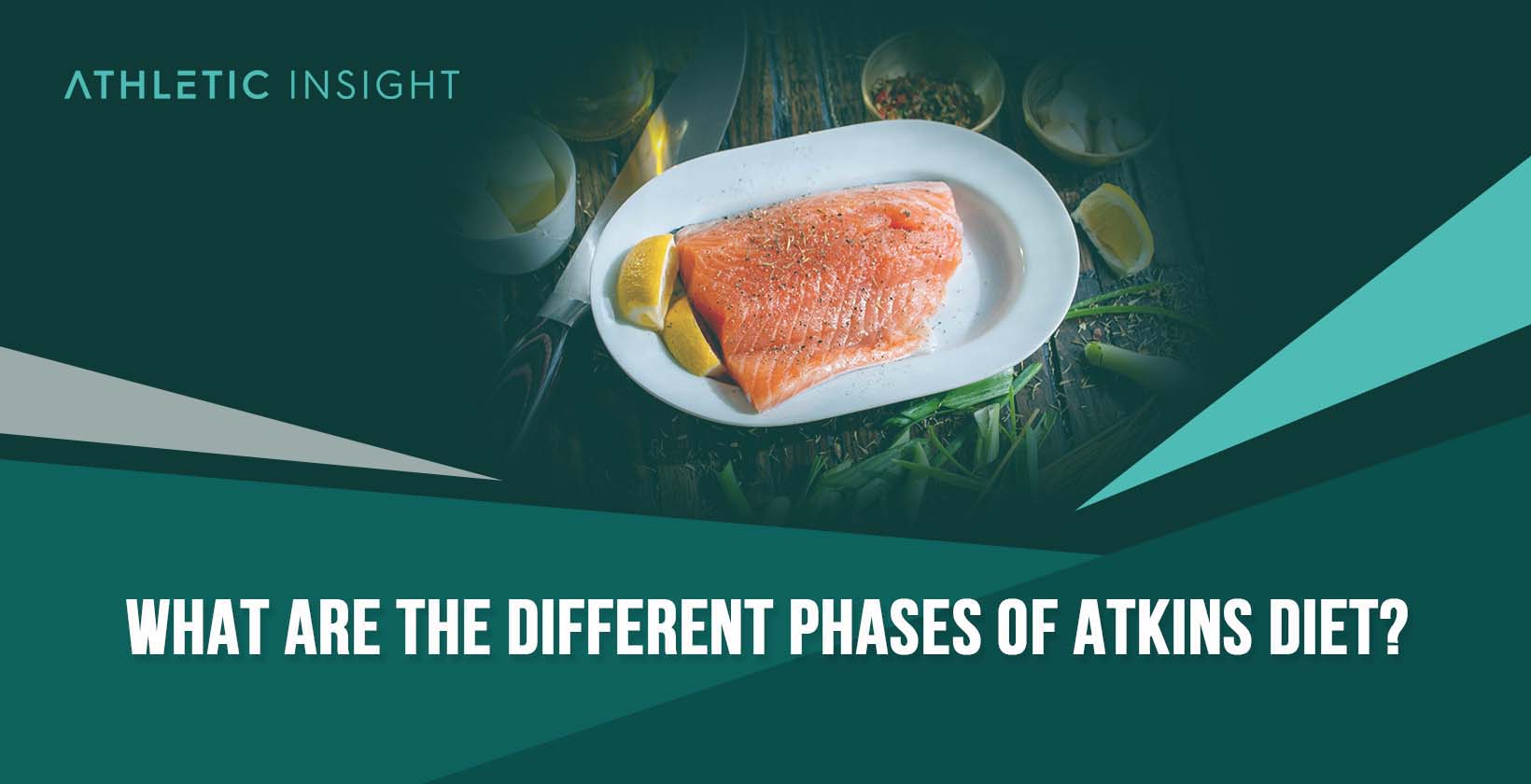The Atkins diet promotes weight loss by implementing a low-carbohydrate diet. What’s more, advocates of the Atkins diet report that it can improve or prevent health conditions such as heart disease and blood pressure.
There are four phases of the Atkins diet; Atkins 20, Atkins 40, Atkins 100, and Atkins 120. Each of these four phases poses its own challenges.
- Phase 1: Induction: During phase 1 (induction), you’re allotted 20g of net carbs per day. This phase of the Atkins diet is intended for individuals who have more than 40 pounds to lose and people with diabetes.
- Phase 2: Ongoing Weight Loss (OWL): During phase 2 (continued weight loss), you are permitted to have 40g of net carbs per day; this allotment of carbs is ideal for anyone who wishes to weigh less than 40 pounds.
- Phase 3: Pre-maintenance: In phase 3 (pre-maintenance), your starting point is 100g of carbs per day. This phase is perfect for those who have essentially reached their target weight and want to get ready to meet their goal and maintain the weight loss afterward.
- Phase 4: Lifetime Maintenance: The last phase (lifelong maintenance) of the Atkins diet allows you to stay between 100-120g of carbohydrates a day. At this stage, you’re aware of how many calories and carbs you can consume while still maintaining the weight loss you’ve achieved by this point.
Phase 1: Induction
Atkins diet phase 1 features many restrictions for eating carbohydrates. Moreover, it is simultaneously the hardest phase to maintain for an extended period. Phase 1 serves to shock the system—jump-starting your weight loss journey.
The ultimate goal is to consume less than 20g of carbs per day. You will lose the most weight during phase 1 from the loss of glycogen stores and water.
Benefits
Here’s a list of the benefits associated with Atkins phase 1.
- More energy
- Curb food and sugar addictions
- Rapid weight loss
- Clear guidelines
Health Risks
Admittedly, the Atkins Diet warns that dramatically reducing carbs during phase 1 of the program can lead to side effects such as weakness, dizziness, and headache.
Moreover, adhering to a low-carb diet such as Atkins can cause constipation, kidney problems, and electrolyte imbalance.
Atkins Phase 1 Food List
Below is a list of the things not to eat during Atkins diet phase 1.
- Grains
- Alcohol
- Bread
- Dairy (except for butter and cheese)
- Starchy vegetables (potatoes, corn, peas)
- Sugar (soft drinks, sweets, cakes)
- Fruit—includes fruit juice
Below are the food items you can consume during Phase 1.
- Eggs– Pastured or Omega-3 enriched
- Healthy fats– avocados, avocado oil, extra virgin olive oil, and coconut oil
- Fatty fish and seafood– mackerel, sardines, trout, and salmon
- Meats– chicken, lamb, bacon, beef, pork, and others
- Low-carb vegetables– asparagus, spinach, broccoli, kale, and others
- Full-fat dairy– cheese, butter, cream, full-fat yogurt
- Acceptable beverages include herbal tea, coffee, tea, diet soda, and of course water
- Seeds and Nuts– macadamia nuts, walnuts, sunflower seeds, and almonds
The Atkins website advises individuals to do this phase of the diet for at least two weeks; however, the site encourages people who want to lose more pounds to continue this phase for much longer.
Atkins Phase 1 Recipes
Chorizo and Green Chile Frittata
Ingredients
- 1 ⅓ oz Canned Green Chili Peppers
- 1 oz Pork Chorizo
- 2 Medium Eggs
- ⅛ cup chopped Roma Tomatoes
- ¼ oz Cheddar Cheese
Preparation
- Preheat the broiler.
- Chop the chorizo into small pieces and sauté it over medium heat for about five minutes.
- Drain any fat remaining in the pan.
- Shred the cheddar cheese and roughly chop the Roma tomatoes.
- Chop the green chilies into bite-sized pieces and mix with the tomatoes.
- Beat the eggs in a bowl and mix in all the ingredients.
- Cook for four to five minutes, flipping on each side to cook evenly. Serve immediately.
Atkins Phase 1 Sample Meal Plan
Breakfast: Scrambled eggs with cheddar cheese and sauteed onions.
Lunch: Salad with bacon and chicken with avocado dressing, along with any acceptable beverage
Dinner: Baked salmon steak, an arugula salad with cucumbers and cherry tomatoes, a side of asparagus, and any acceptable beverage.
Snacks: You can have up to two snacks a day. Your snacks can consist of any Atkins Diet products, such as granola bar, or a healthy snack like cheddar cheese or celery.
During this stage, there aren’t as many options for what you want to eat, so you’ll have to target proteins and high-fat butter and oils to help reach your daily calorie requirement.
Phase 2: Ongoing Weight Loss (OWL)
Phase 2 is slightly easier to maintain since you can slowly but surely reintroduce certain carbs. Try to stay between 20-40g per day. If you add too many carbs too quickly, you’ll jeopardize all of the weight you’ve lost at this point.
Fibrous carbs will work best because they’ll keep you fuller for longer, which helps you to avoid overeating. When you get within ten pounds of your desired weight, you can move to the next phase.
Benefits
Here’s a list of the benefits associated with this phase.
- For at least the first year, you can achieve similar or better weight loss results compared to other popular diets
- You get to eat more carbs at this stage
- You’re still losing weight at a healthier, more gradual pace
Health Risks
There is a restriction to some degree on healthy foods such as higher-carb fruits and vegetables. These types of foods contain essential minerals and vitamins, which could potentially cause health problems and nutrient deficiencies.
Atkins Phase 2 Food List
Here’s what you can’t consume in phase 2.
- Starchy vegetables (corn, oats, brown rice)
- Fruits with a higher sugar content (mango, banana, papaya)
- Sweets (Cookies, cakes, candies, soft drinks)
- Simple and refined carbs (White bread, pasta, processed grains)
You can now include restricted amounts of these foods.
- Cream
- Berries
- Legumes (chickpeas, lentils, black beans)
- Leafy greens
- Yogurt
- Melon
- Nuts
Atkins Phase 2 Recipes
Spring Chicken Salad
Ingredients
- ½ teaspoon Salt
- ¼ tablespoon Peanut Oil
- ¼ large Carrot
- ⅛ teaspoon White Pepper
- ½ teaspoon Stevia
- 4 oz cooked, boneless Chicken Breast
- 1 cup shredded Bok-Choy
- ¼ cup Cilantro
- 4 tablespoons Rice Vinegar (no sodium)
- 1 large Spring Onion
- 1 teaspoon Sesame Oil
- ½ cup Roasted Peanuts (no sodium)
Preparation
- Chop the cooked chicken breast, cilantro, carrot, peanuts, and green onion, and sit those ingredients aside.
- Mix the oils, vinegar, salt, sugar, and pepper together in a large bowl.
- Gently toss the wet and dry ingredients together. Serve immediately.
Atkins Phase 2 Sample Meal Plan
Breakfast. Two pieces of bacon, two medium to large strawberries, and a half cup of cooked oatmeal.
Lunch. One medium tomato, a five-ounce hamburger, one ounce of cheddar, one wheat wrap, and two slices of avocado.
Dinner. A six-ounce steak and two cups of roasted cauliflower and broccoli with one tbsp of olive oil.
Snacks. Raspberries, medium carrots, raspberries, or any Atkins products with an allowable beverage.
You can mix and match your meals by swapping and adding in more seeds, nuts, Greek yogurt, and cheeses. These foods are high in healthy fats, so it adds some variety to your meal plan.
Phase 3: Pre-maintenance
By phase 3, your body should be used to consuming a low amount of carbs. You can eat up to 100g per day at this stage. You’re getting closer to your target weight at a slower pace as you prepare for long-term success.
Now you can eat more of these foods.
- Fruit
- Starchy vegetables (carrots, potatoes, corn, peas)
- Whole grains (barley, oatmeal, brown rice, quinoa, wholewheat bread)
Benefits
Here’s a list of the benefits associated with this phase.
- Your body should be getting used to the low amount of carbohydrates
- The weight loss is more gradual, making it easier to maintain
Health Risks
According to the American Heart Association, the World Health Organization, and the American Cancer Society, the Atkins diet allows an excessive amount of processed meats. These types of food may raise the risk of heart problems and certain cancers.
Atkins Phase 3 Food List
You can eat everything from the previous two phases while also adding small amounts of starchy vegetables, fruits, and grains. Be cognizant of how this affects your body and scale back if necessary. Try to aim for foods that are high in healthy fats.
Atkins Phase 3 Recipes
Beef Burgers
Ingredients
- 1 lb Ground Beef
- ⅓ cup Baby Spinach
- ¼ cup chopped Roma Tomatoes
- ½ teaspoon White Pepper
- ½ teaspoon Salt
- ⅓ teaspoon Dried Dill Weed
- ⅓ cup Feta Cheese (crumbled)
- 1 large Scallion
Preparation.
- Mix the chopped scallion, ground beef, spinach leaves, feta cheese, tomatoes, pepper and salt, and dill.
- Form the meat into four evenly-sized patties.
- Grill them on medium heat for six minutes on each side. Serve immediately.
Atkins Phase 3 Sample Meal Plan
Breakfast. Two-egg frittata, one cup of fresh cantaloupe, and one whole wheat bagel
Lunch. A six-ounce grilled chicken breast, two ounces of roasted potatoes with one tbsp coconut oil, and one cup of asparagus
Dinner. Five-ounce trout filet, one cup of roasted Brussel sprouts, and two ounces of mixed berries
Snacks. Granola bar, vanilla milkshake, nuts, seeds, cheese, any Atkins products
You should have an idea of how many carbs you can eat at this point, so you should be able to get a little more creative with your meals since you can eat more carbohydrate-dense fruits and vegetables.
Phase 4: Lifetime Maintenance
This phase is aimed at keeping you at – or close to – your goal weight, but with more carbs and food. You will continue to eat low-carb – just not as low.
This amount tends to be around 100g-120g of carbs a day, though it can be slightly more or less depending on how your body responds to carbs. You should be aware of the number of carbs you can include in your diet without gaining weight. This is a maintenance phase.
Benefits
Here’s a list of the benefits associated with this phase.
- Feel fuller for longer
- You should have reached your target weight by this phase
- This is the easiest phase to maintain because you can consume a higher amount of carbs in this phase than in any other stage
Health Risks
There’s not a lot of strong evidence that this diet produced long-term results because most studies don’t go beyond a year or two into the maintenance phase.
Atkins Phase 4 Food List
At this stage, you’re eating more carbohydrates and trying to keep your weight down by focusing on protein and healthy fats. You are likely aware of how much you can eat without straying too far from your target weight. You can consume all of the foods from the previous lists while allowing no more than 120g of carbohydrates per day.
Atkins Phase 4 Recipes
Mini Mediterranean Pizzas
Ingredients
- 1 serving Low Carb Wheat Pizza Crust (pre-made)
- ½ oz Spicy Salsa
- 1 tablespoon Olive Oil
- ⅛ Cup shredded Provolone Cheese
- ⅙ oz Cilantro
- ¼ medium Spring Onion
- 3 Black Olives (sliced)
Preparation
- Heat the oven to 350° F.
- Brush the olive oil onto the pizza crust and lightly toast it in the oven.
- Spread salsa onto the crust.
- Sprinkle shredded cheese onto the crust.
- Sprinkle chopped onions and olives on pizza.
- Bake for 10 minutes in the oven until the cheese starts turning brown. Serve immediately.
Atkins Phase 4 Sample Meal Plan
Breakfast. Scrambled eggs with whole wheat yeast and two slices of avocado
Lunch. A six-ounce salmon filet with one cup of kale and two ounces of fruit salad
Dinner. A steak fajita with peppers, onions, and six ounces of steak.
Snacks. Fresh blueberries, cottage cheese, apple slices with peanut butter, or any Atkins products.
Include healthy carbs, like fresh fruits and whole grains, as part of a healthy, long-term eating plan.
Is the Atkins Diet Worth It?
The Atkins diet is worth a shot if you understand the implications of engaging in a diet with such a low amount of carbs over an extended period.

If you have pre-existing issues with your kidney or problems with your blood sugar levels, it is best to consult your primary care physician prior to starting this diet.
Additionally, if you want to lose weight quickly and your body can adjust to the calorie restriction, it is worth trying the diet to achieve your goals on a short-term spectrum.
What Is the Importance of the Phases of Atkins Diet?
Each phase of the Atkins diet is important because they build on one another to create a total transformation. The first phase forces your body into such a severe deficit that your weight loss occurs quickly.

The second phase adds a little more carbohydrates and calories while keeping your weight down, the third phase continues to increase the foods you can enjoy on high fat, low carbohydrate diet, and the last phase maintains your goal weight which you should have reached by this phase.
Which Phase of the Atkins Diet Is the Most Important?
The first phase of the Atkins diet is the most important because that is when you will lose the most weight because of the carbohydrates restriction. This phase is also the most difficult because it’s such a huge adjustment compared to what you were likely eating before the diet.
You get within ten pounds of your target weight, and then you adjust your diet so that your body doesn’t gain the weight back too quickly as you increase your calories from a very large deficit.
How Long Do Phases Last on the Atkins Diet?
The phases of the Atkins diet last for two weeks each, and it is usually centered around you reaching a certain weight. Once you reach your weight, you focus on slowly adding more foods and increasing your carbohydrates intake while also maintaining your desired weight.
How Do You Know When to Move to the Other Stage on the Atkins Diet?
You know when to move to the other stage on the Atkins diet when you reach your target weight for that phase. For example, after the first two weeks in phase 1, you gauge whether you want to slow down and gain weight more gradually or if you want to stay with the rapid weight loss for a bit longer.
Once your body adjusts to the new diet and the low amount of carbs you consume, you may continue to move to the next phase as long as you’re not suffering adverse side effects.
What is the List of Foods to eat on Atkins Phase 1?
The Phase 1 of Atkins is the most strict part of the diet. During this phase, only certain proteins, dairy, vegetables, fats, nuts and beverages can be consumed. It is best to follow a comprehensive Atkins Diet Food List before starting so that you know what foods can be eaten.
- Proteins: Beef, pork, lamb, chicken, bacon, salmon, trout, sardines, eggs
- Full-fat dairy: Cheese, butter, heavy cream, yogurt
- Low-Carb Vegetables: Leafy Greens: Spinach, kale, lettuce, broccoli, cauliflower, zucchini, bell peppers, cucumbers
- Healthy Fats: Avocados, olive oil, coconut oil, avocado oil, lard
- Nuts and Seeds (in moderation): Almonds, walnuts, flaxseeds, pumpkin seeds, chia seeds
- Beverages: Water, coffee (without sugar), green tea



